For nearly 14 years, my work in marketing and communications has been about figuring out one thing: why people choose one product over another. From leading communications for the travel app BlaBlaCar across Europe to diving into the complexities of a pet insurance startup, I’ve been solving marketing puzzles that don’t fit into a neat B2B or B2C box.
My whole career has shown me that there’s no universal marketing playbook.
Everything comes down to trust. And often, that trust has to be earned twice: once with the customer, and once with the influencer who stands between you and them.
It’s about making everything stay human. This became especially clear when I realized that in many industries, there’s a critical influencer standing between you and your end customer.
This is the world of B2B2C.
What is the B2B2C model?
The line between B2B and B2C is so blurred now that it’s almost nonexistent. We’re often operating in a B2B2C ecosystem, where multiple audiences interact with each other. As a company, you have to design and build for these audiences simultaneously.
To paint a picture, imagine you’re a dog or cat owner buying pet insurance. You’re probably not just Googling it on a lazy Sunday. More likely, you’re considering it because your vet brought it up after an appointment. The vet’s mention is what seals the deal, even if the insurance company’s website and product are amazing.
That’s B2B2C in action. You have to make sure the end customer loves your product, but you also have to ensure the vet trusts you enough to mention it in the first place. You can market to the end user, but you can’t ignore the person in the middle, the one who shapes and often enables that decision.
The ‘aha’ moment: realizing you’re in a B2B2C ecosystem
At the pet insurance startup, we ran all the classic marketing campaigns: performance marketing, lead generation, and conversion funnel optimization. But looking back, the biggest ‘aha’ moment was realizing that these channels alone didn’t explain why pet owners were choosing us.
Many customers signed up because their vet recommended us, but our brand wasn’t set up for that kind of endorsement. Digital ads gave us visibility and built awareness, but they didn’t solve the harder part: making sure vets saw us as credible enough to be part of the conversation.
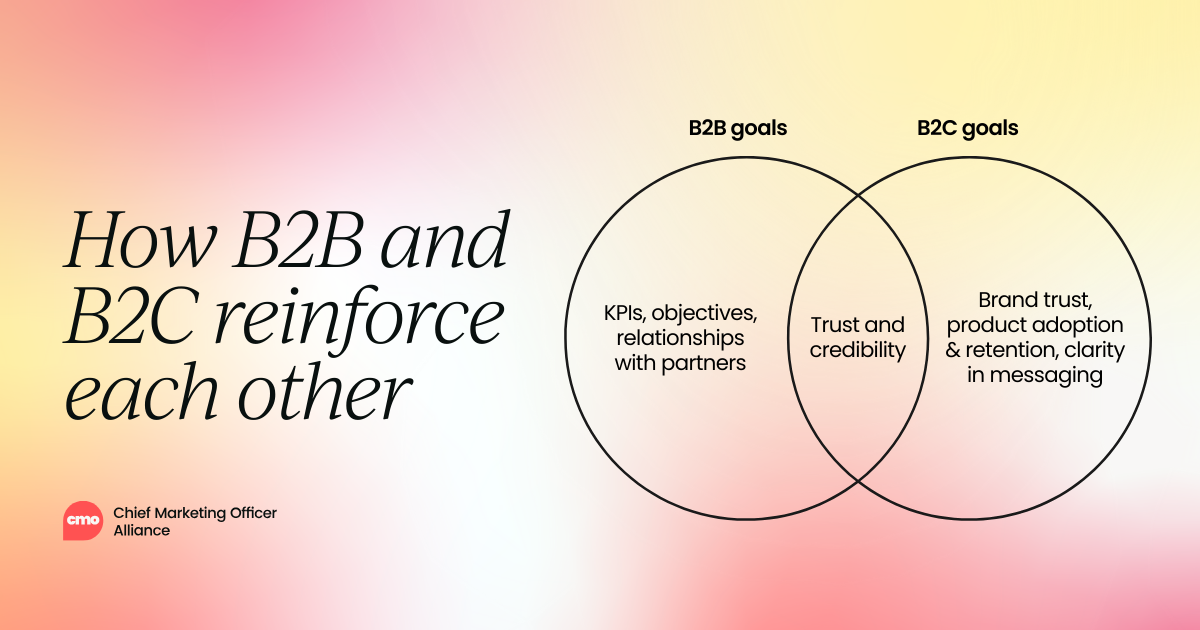
This made it clear that our challenge wasn’t just selling online; it was about building credibility. And credibility is always about building relationships.
We had to shift our mindset from direct-to-consumer (D2C) to B2B2C and start thinking about collaborative, trust-based marketing.
How to build trust and credibility with your intermediaries
Once we embraced the B2B2C model, our entire approach had to change. We knew we couldn’t rely on dashboards and conversion rates alone. We had to get out and build real relationships.
The most valuable research you can do: just talk to people
To put it simply, we just went and talked to people.
Our mindset changed completely once these conversations started. As a marketer, I know that data might tell you a conversion rate is low, but it will never tell you why it’s low.
We organized meetings with vet clinics over Zoom, on Google Meet, and in person. We asked simple questions: What annoyed them? What would make them feel good about discussing a pet insurance brand? These conversations also helped us understand how pet owners think.
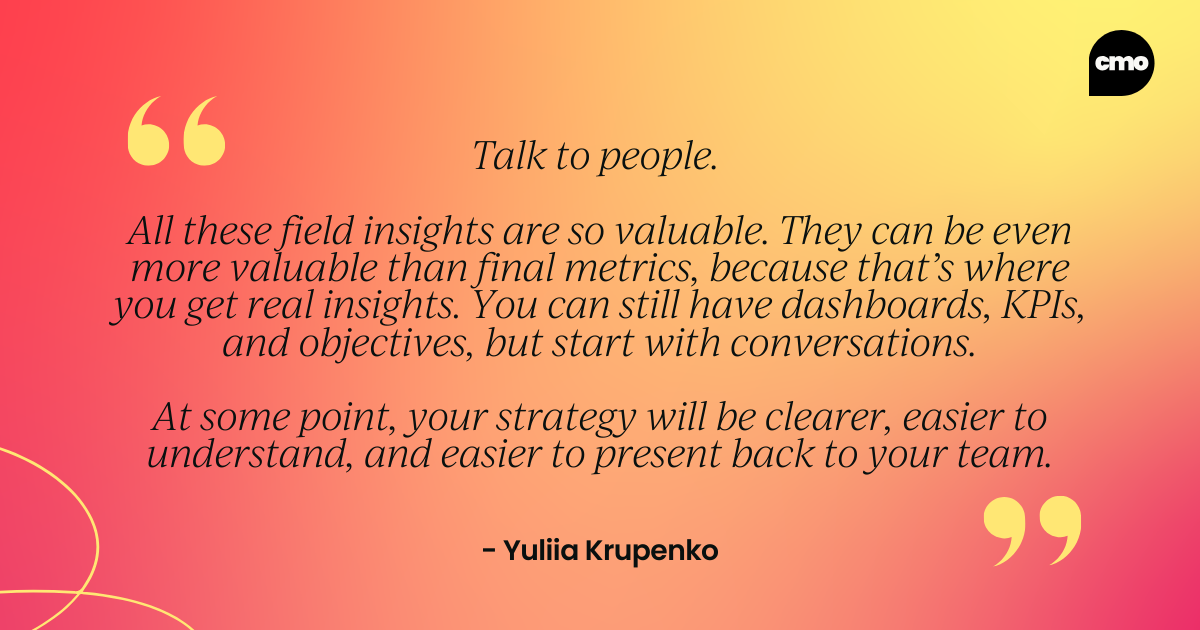
From data dashboards to genuine empathy
Of course, marketing surveys and NPS scores have their place, but the real insights came when we talked directly to our partners. We learned about pet owners' pain points and finally understood how vets explain complex topics like insurance to them. We saw how the B2B and B2C sides of the ecosystem interacted.
That was gold. It felt like we gained real empathy, along with practical insights you’d never find in a dashboard. This completely changed our go-to-market strategy. It was no longer about just pushing all the pet owners in the UK through a funnel. It was about enabling a simple, helpful interaction between vets and pet owners.
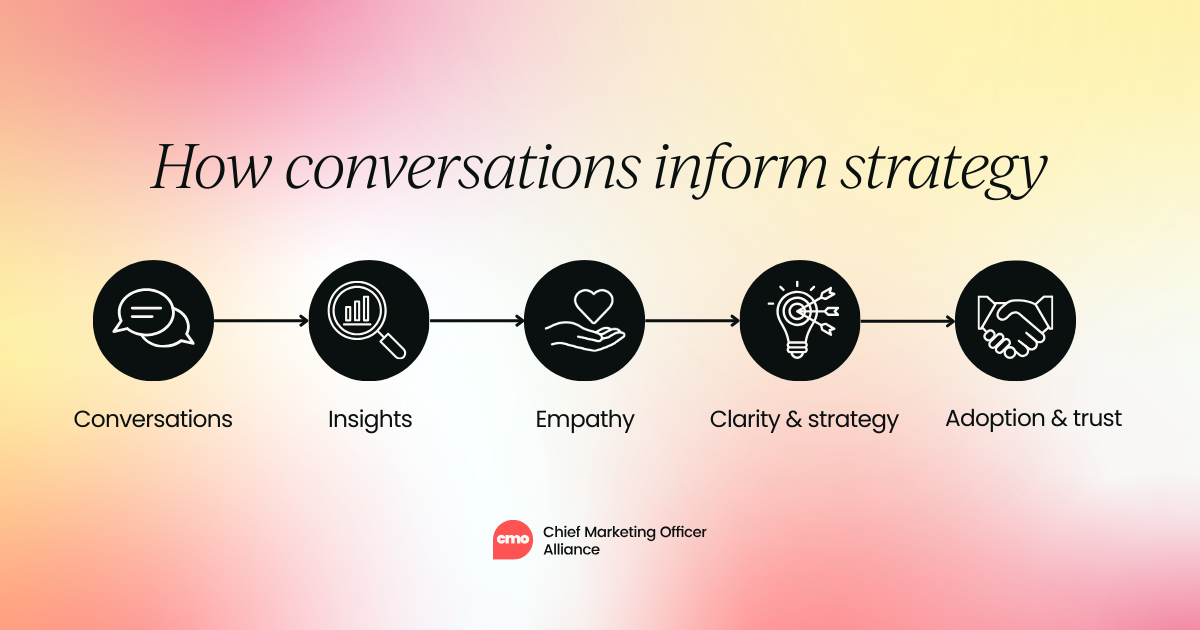
The marketer’s biggest challenge: accepting what you can’t control
One of my biggest lessons was realizing that not everything can be controlled.
As marketers, we love dashboards and clean attribution models - but in a B2B2C world, so much of the decision-making happens outside our direct reach. The real challenge is shifting from trying to control every variable to enabling and supporting the people who influence those decisions.
Once you do, you can start focusing on enabling and supporting your influencers.
Focus on enabling, not controlling
This new focus made us rethink our messaging. We had to eliminate any jargon that made people’s eyes glaze over. Pet owners are deeply caring people; their minds are always occupied with making their pet’s life better. Our mission was to address that.
Small details mattered. We made sure our leaflets were genuinely useful and clear, not just nice to look at. We provided resources that made it easy for vets to explain our product. The goal was to give them the tools they needed to have a simple, confident conversation with their clients.
Understand that trust is a long-term investment
Another key learning was that you can’t just get a few clinics on board and then scale immediately. Building a B2B2C strategy isn’t possible that way. It’s all about trust and nurturing relationships for the long term to create a win-win for everyone.
This process forces you to go back to basics. Are we communicating clearly? Is our messaging simple enough? Do we need to adjust our product? These ongoing conversations are essential, even when you think you know it all. Taking notes on the specific words your partners use is incredibly helpful for shaping your strategy.
Business to business to consumer examples across industries
This model isn’t unique to pet insurance. Once you start looking for it, you’ll see the B2B2C ecosystem everywhere.
Healthcare and medtech
Healthcare is a huge one. Think of pharmaceutical companies that need doctors to prescribe their medications. Or consider platforms like Zocdoc that connect doctors and patients. The company needs to win over both clinics and patients, making sure both sides trust the platform.
Fintech
The fintech world is filled with this model.
- Stripe sells to developers and businesses but also designs the payment experience to be seamless for the end customer.
- Klarna works with retailers to integrate its service but also markets its "buy now, pay later" features directly to shoppers.
- Square sells hardware and software to merchants while also designing the payment flow for the end customer.
In all these cases, the company must be transparent and clear for both audiences.
Edtech
Edtech is another classic example where the lines between B2B and B2C are blurred.
- Platforms like Google Classroom and Kahoot connect teachers and students but also work with schools to drive adoption.
- Coursera partners with universities to offer courses but markets directly to us, the learners.
Anywhere you find an influential intermediary, you’re dealing with a B2B2C dynamic, whether you planned for it or not.
The essential mindset shifts for B2B2C marketing
Working in this space requires a fundamental shift in how you think as a marketer. It’s messy and fascinating, but it all starts with your mindset.
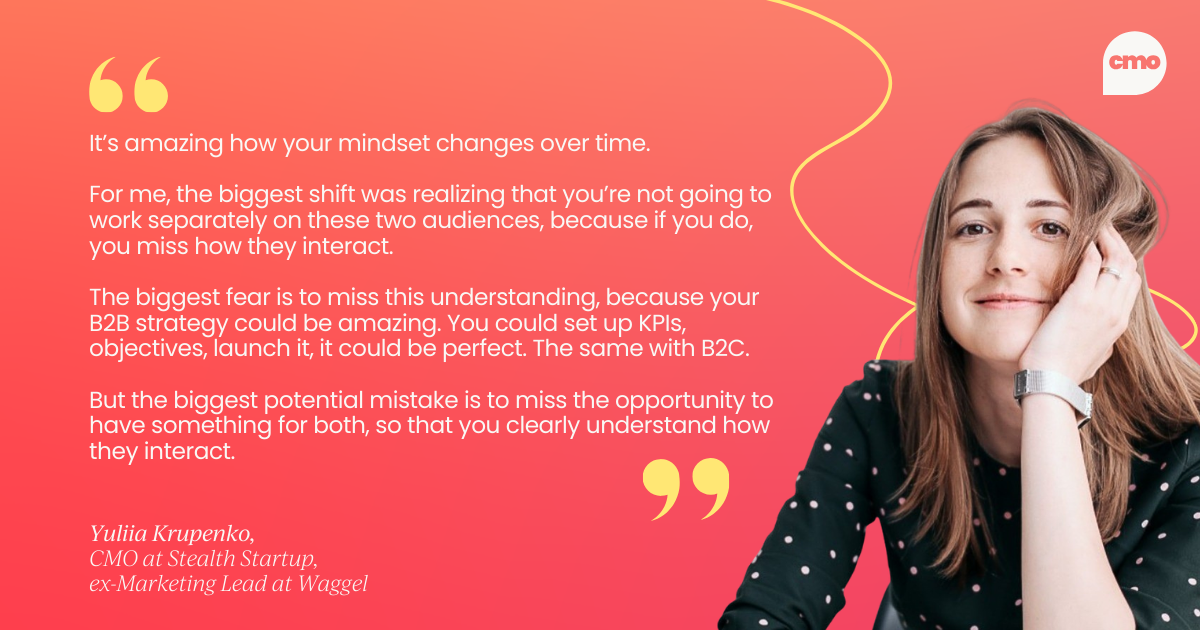
Stop thinking about two separate audiences
The biggest mistake is to work on your B2B and B2C strategies separately. If you do, you miss how they interact and reinforce each other. The real magic happens when you design for both audiences at once, creating a strategy where they work together instead of competing for your attention.
Acknowledge your intermediary as a customer
You have to accept that your end user isn’t your only customer. You are also earning trust with the intermediary, and that is a long-term story. You won’t earn it in three months. It means investing in relationships you don’t fully control.
Embrace a slower, more deliberate strategy
As marketers, we like to test, learn, and scale quickly. But a B2B2C approach can be slower. Once you figure it out, however, it’s far more satisfying. You’re not just buying attention; you’re earning trust. As soon as you do, everything becomes so much easier.
My best advice? Just go talk to people. Field insights are often more valuable than your final metrics. Ask simple questions. Start from the beginning. Your strategy will become clearer and easier to present to your team. At the end of the day, it’s all about people trusting other people.
Keep it human.






.png)


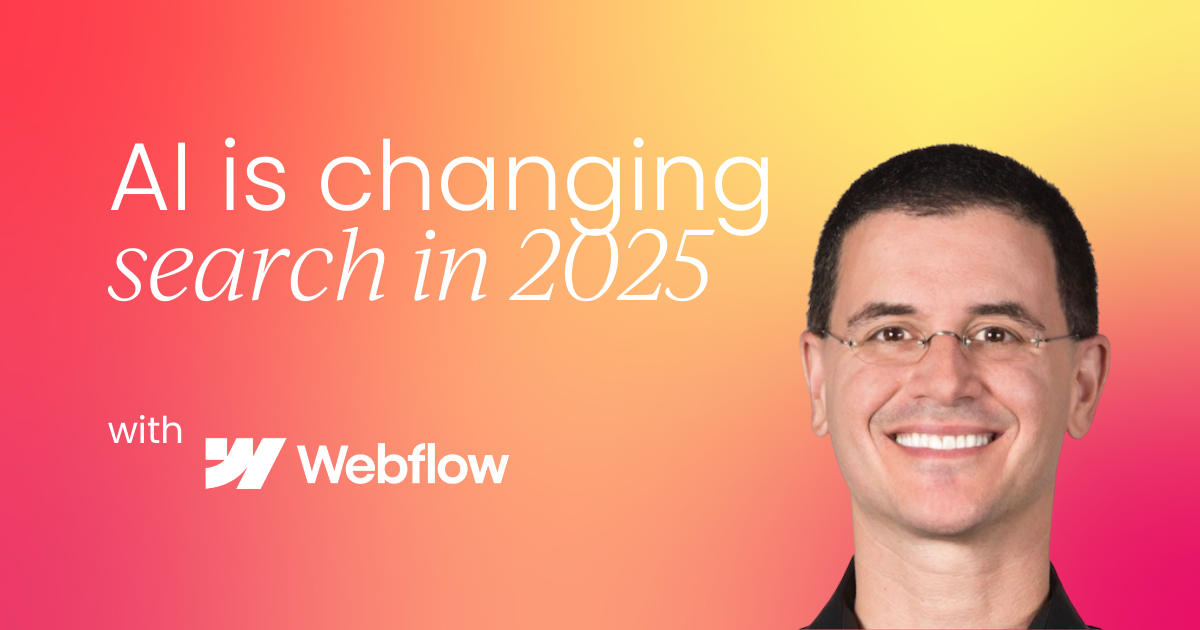
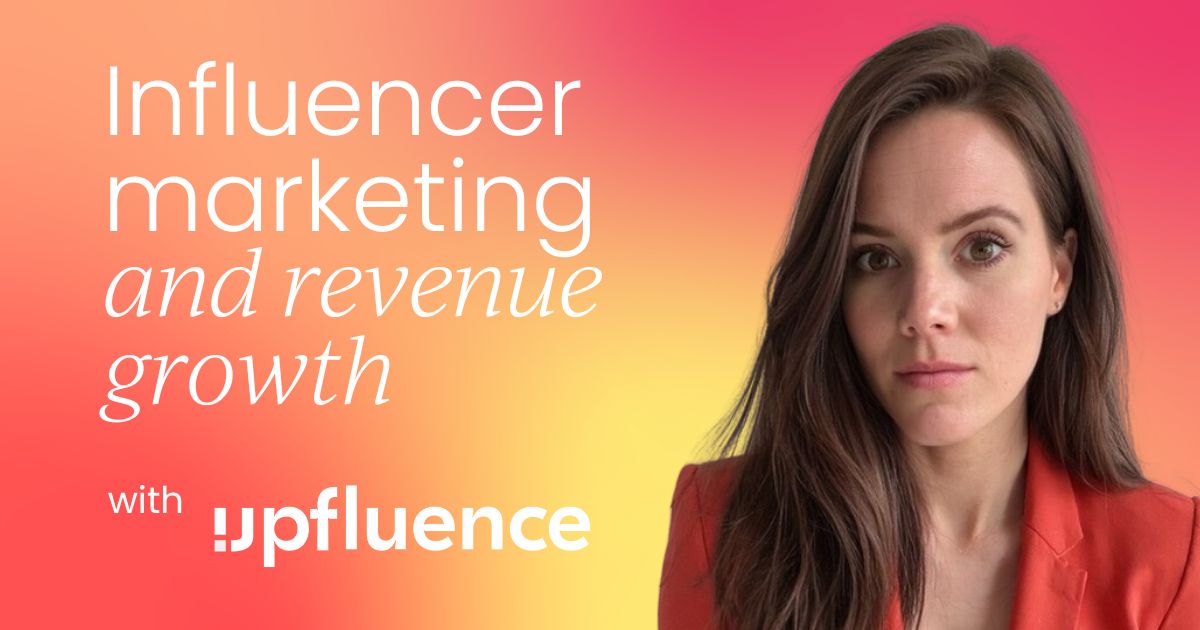
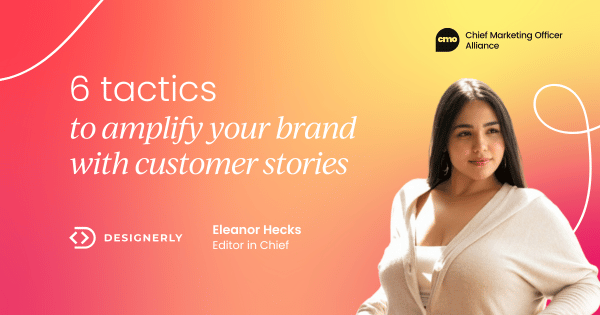




 Follow us on LinkedIn
Follow us on LinkedIn




